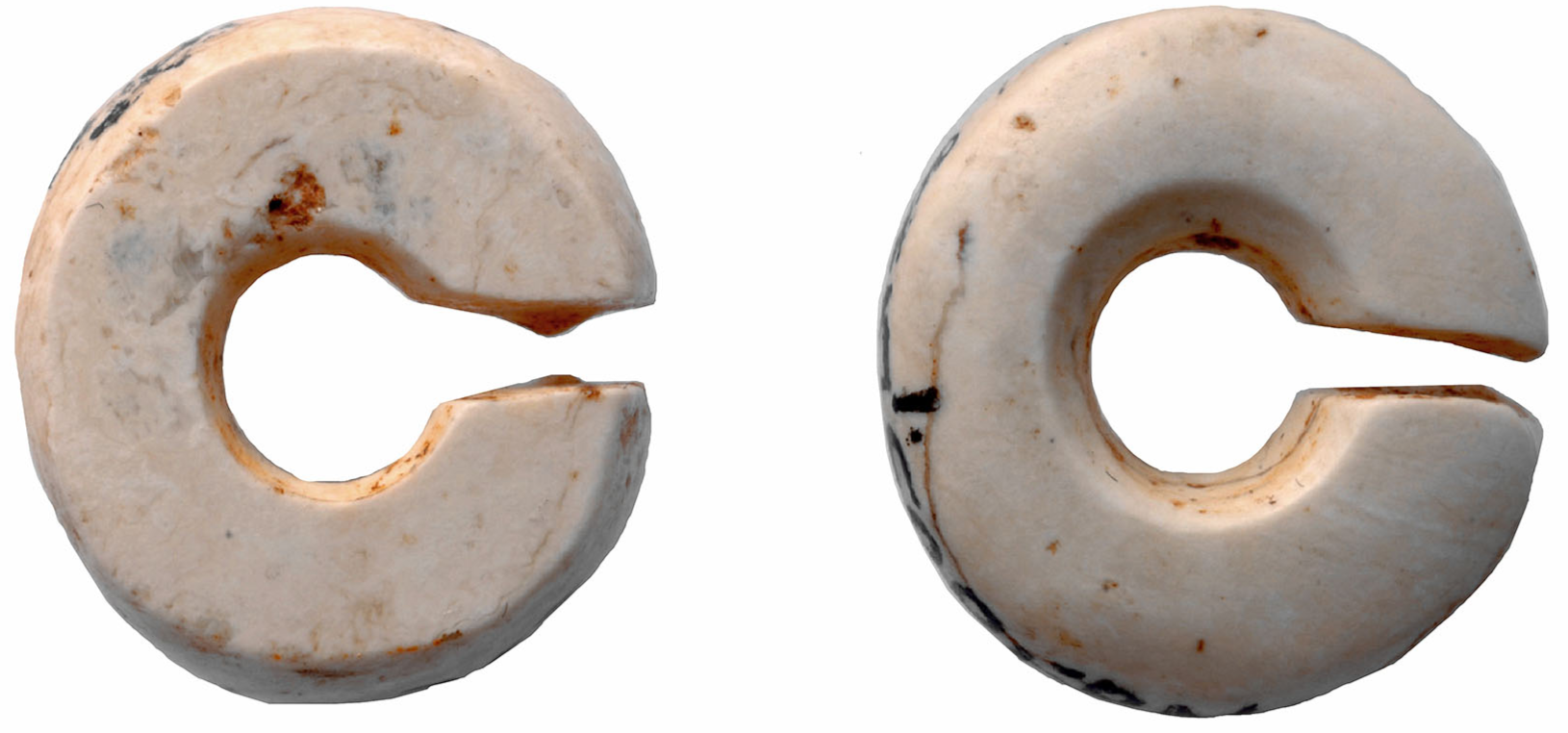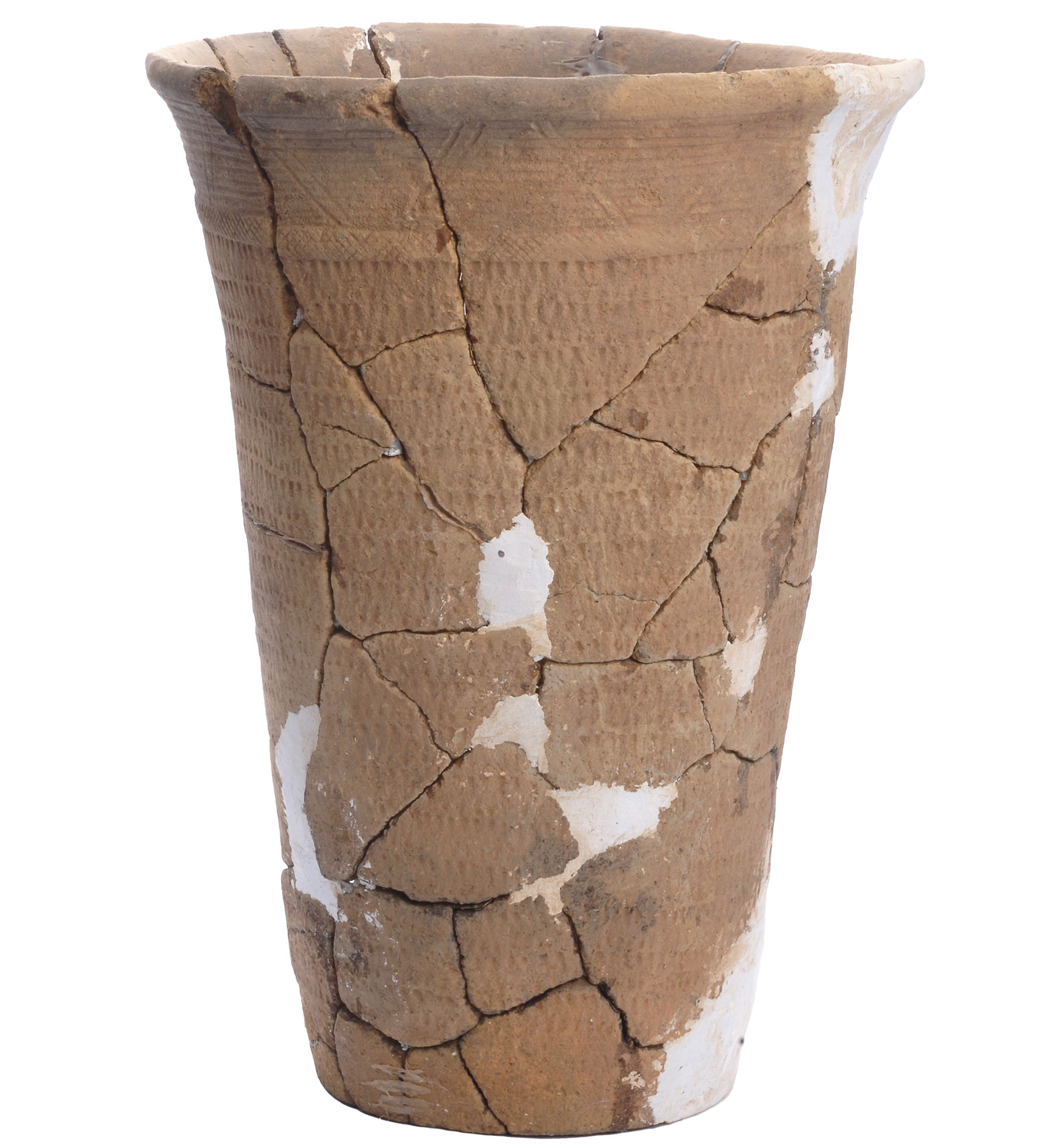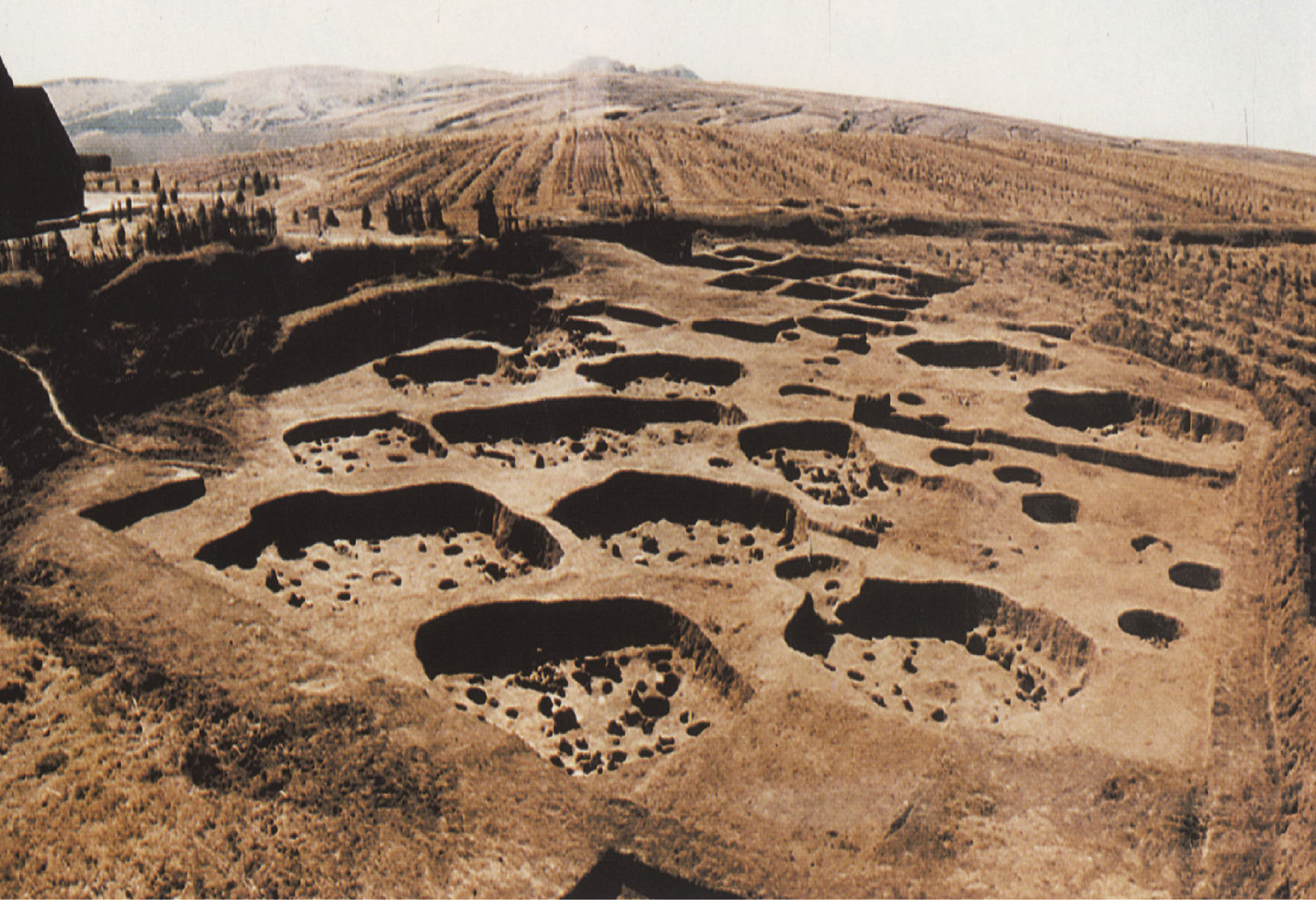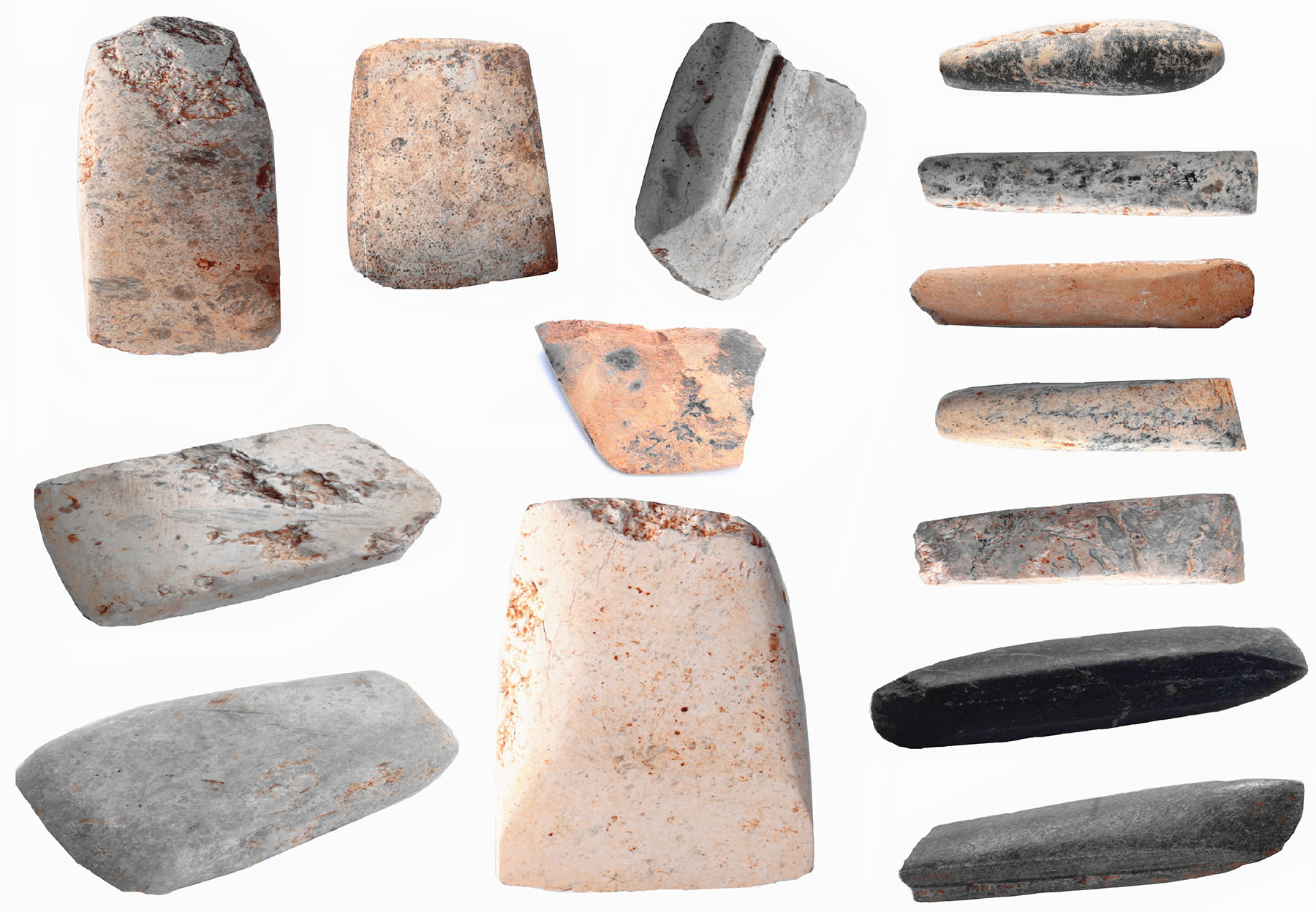Ancient site reveals secrets of the past that help build evidence of a thriving society, Wang Ru reports in Fuxin, Liaoning province.

Picturing life nearly 8,000 years ago in what is now Northeast China requires a leap of imagination, but there is also hard evidence for how people lived at the time. Findings show they inhabited semi-underground dwellings, the largest of which occupied an area of 157 square meters, and which often had a fire pit in the center. Some even had two — one perhaps for cooking and another for keeping kindling materials. They also collected fruit, hunted, raised animals, and made stone tools, jade artifacts and pottery vessels.
Knowledge of their lifestyle, rudimentary as it may be, is based on research at the Chahai Site in Fuxin, Liaoning province. The settlement has yielded discoveries of not only building foundations, tombs, ash pits and moats, but also a large number of stone tools, pottery vessels and jade artifacts.
READ MORE: Tracking down the dragon throughout history
After spending several million years in the Paleolithic Age, humans entered the Neolithic Age around 10,000 years ago, a time that coincided with the Holocene Megathermal, a period characterized by relatively warm and humid climate conditions that were advantageous for survival and progress. This was when the Chahai people lived, says Li Jingyan, director of the Chahai Site Museum.
From an archaeological perspective, its key discoveries include an animal figure made out of stacked stones that is widely believed to be the totem of a dragon.
Although archaeological work on the site ended in 1994, and there are no plans for further excavation, heritage professionals are attempting to build a more comprehensive understanding of Chahai Culture by excavating nearby sites, and by stepping up efforts to protect the site and bring it back to life.

Discovered during the second national census of cultural relics in 1982, the site, of 12,500 sq m, was excavated between 1986 and 1994.
"The Chahai Site is a Neolithic human settlement in the West Liaohe River Basin with rich cultural remains. These include settlements, house foundations, tombs, and even evidence of totem worship," Li says.
One highlight of the discoveries was the stacked stone totem, probably of a dragon, which has subsequently been backfilled to create a replica. "This is probably the earliest dragon totem from the Neolithic period ever discovered in China," Li says. "It was made by stacking local reddish-brown stones in the middle of the site, and is about 19.7 meters long and 1.8 to 2 meters wide. It seems to lift its head, open its mouth and bend its body, as if it would rise up into the sky."
The Chinese call themselves the "descendants of the dragon", a demonstration of the influence of this mythical being as a totem. Li says that dragon culture is believed to be closely connected to the rise of Chinese civilization.
Guo Wu, a researcher at the Institute of Archaeology at the Chinese Academy of Social Sciences, says that similar to Chinese civilization, which had many points of origin and gradually coalesced into a unified whole, dragon images appeared in different places during the Neolithic Age and gradually resolved into a fixed image during the Shang Dynasty (c. 16th century-11th century BC).
"From Chahai Culture, dragon worship is part of Chinese culture and also an important symbol of the origins of Chinese civilization," Li says.

Another major discovery is the jadeware unearthed at the site, which includes tools, such as axes and chisels, ornaments and artifacts, probably for ritual use. They are made of tremolite and actinolite, deposits of which have not been found nearby, so where the Chahai people got these raw materials remains a mystery, Li says.
He adds that south of where the "dragon" was found lie 10 underground tombs that are similar to the stone barrows of Hongshan Culture, a Neolithic culture that existed in northern China between 6,500 and 5,000 years ago, which is known for its exquisite jadeware, especially dragons. The barrows are also made out of stacked stones, and contain underground tombs.
"This may suggest cultural inheritance. As a matter of fact, Chahai Culture is widely believed to be a major origin of Hongshan Culture, since they share similarities in terms of the choice of locations for homes, tomb typologies, dragon worship, preference for jade and domestication of pigs," Li says.
A great number of pottery and stone tools have been found at the site, among which more than 1,000 pottery vessels are intact or can be restored. Over 2,400 stone tools have also been unearthed.
Li says the tools are believed to have been made by skilled craftspeople, since the pottery vessels are well-made and decorated with exquisite patterns. This suggests a social division of labor that probably appeared during the Chahai period, which permitted professional craftspeople to focus on their creations and honing their skills.

"The social division of labor leads to social differentiation, and finally to the birth of a country. This is the dawn of the birth of civilization," Li says, adding that four nearby sites have yielded similar discoveries and are also believed to belong to Chahai Culture. Together, they form a group of sites waiting to be explored.
"The Chahai group is one of the earliest set of sites in the West Liaohe River Basin, and dates back to about 8,000 years ago," said Li Xinquan, former deputy director of the Liaoning Provincial Institute of Cultural Relics and Archaeology, during a seminar last month.
"They are important components of the pluralistic and integrated pattern of the origins of Chinese civilization and testimony to nearly 10,000 years of cultural history and 5,000 years of civilizational history of China," he added.
Legal measures to protect the five sites were enacted in 2020, which also ensure support for their study and development.
There are also plans to build an archaeological park focusing on the site, which will be integrated with environmental tourism and feature a new museum, archaeological sites, areas for appreciating agricultural landscapes, and spaces for leisure activities. The new museum will display not only artifacts from the sites, but also from the Paleolithic period in the Chahai area, and from Hongshan Culture, the probable successor of Chahai Culture.
"The objective is to provide a comprehensive understanding of the origins and evolution of Chahai Culture," says Li Jingyan.
Contact the writer at wangru1@chinadaily.com.cn


